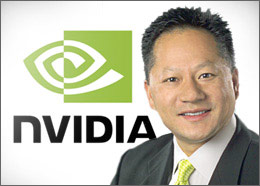News
nVidia looking for the mobile market to grow
- Details
- By Sean Kalinich
- Hits: 2542
 About two years ago, roughly the same time as the ZuneHD hit the market with the first Tegra inside, nVidia CEO Jen-Hsun Huang made a prediction of sorts. He stated that he envisioned a time when the GPU was not the bread and butter of nVidia. Instead he saw the mobile CPU and the SoC (system on chip) as the wave of the future. Of course he could not get away from his graphical legacy, so his vision also included an nVidia GPU (or two) along with the mobile CPU. At the time the press sort of overlooked the story. It was not that news worthy. After all the Tegra only had one well known design win (there were others but many never reached the market) the ZuneHD. Arguably it was (and still is) a great product, it just was marketed VERY poorly and was going head to head with the greatest show on Earth; the Apple marketing team.
About two years ago, roughly the same time as the ZuneHD hit the market with the first Tegra inside, nVidia CEO Jen-Hsun Huang made a prediction of sorts. He stated that he envisioned a time when the GPU was not the bread and butter of nVidia. Instead he saw the mobile CPU and the SoC (system on chip) as the wave of the future. Of course he could not get away from his graphical legacy, so his vision also included an nVidia GPU (or two) along with the mobile CPU. At the time the press sort of overlooked the story. It was not that news worthy. After all the Tegra only had one well known design win (there were others but many never reached the market) the ZuneHD. Arguably it was (and still is) a great product, it just was marketed VERY poorly and was going head to head with the greatest show on Earth; the Apple marketing team.
Jump forward to today and we find the Tegra and the Tegra 2 in many devices. In fact one of the best-selling Android tablets on the market today has a Tegra 2 dual core SoC inside (for those of you that do not know it is the Galaxy Tab 10.1) this is followed by devices like the Asus EEE Pad Tansformer and others. They really have come a very long way in terms of the smartphone and tablet market. Of course they still have Apple to contend with (and their legal and marketing teams) so the battle is not won just yet. However, what we are seeing is that Huang’s vision is coming to pass. nVidia just might find itself earning more than 50% of their income from the tiny SoC and not their high-end GPUs.
Still the road ahead is not completely clear, nVidia will face competition in the form of Qualcom (which just bought BigFoot Networks), as well as Samsung and Even Apple (to a lesser degree) in this new market. As for Intel, Huang says they are not worried about them because the Atom is not an ARM CPU and is not even “speaking the same language”. He feels that the lower cost ARM based tablets will be more attractive to the consumer looking for a small and light system. With the advent of Windows 8 for ARM people will also gain the ability to move back and forth between ARM and x86 keeping things on almost the same platform. This will help to bring the more “desktop centric” consumers into the fold especially with the prospect of a quad core ARM CPU running Windows 8 on the horizon.
It is when companies have to innovate to survive that some of the coolest things arise. I wonder what we will see from Tegra in near future and what lessons from Tegra will nVidia take to other departments to help improve them?
Source CNET
Discuss in our Forum



